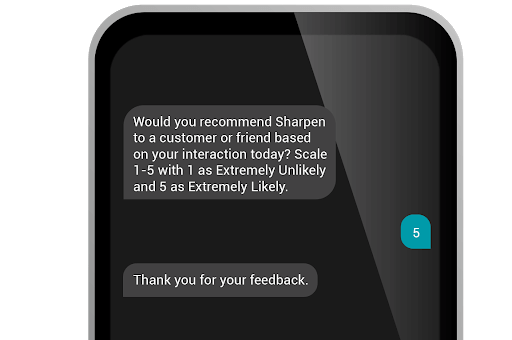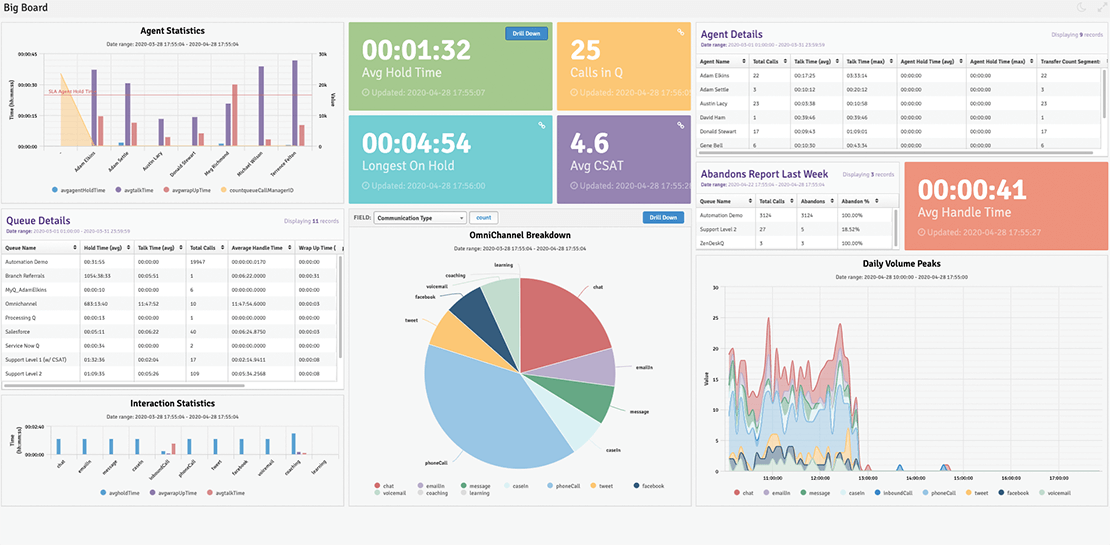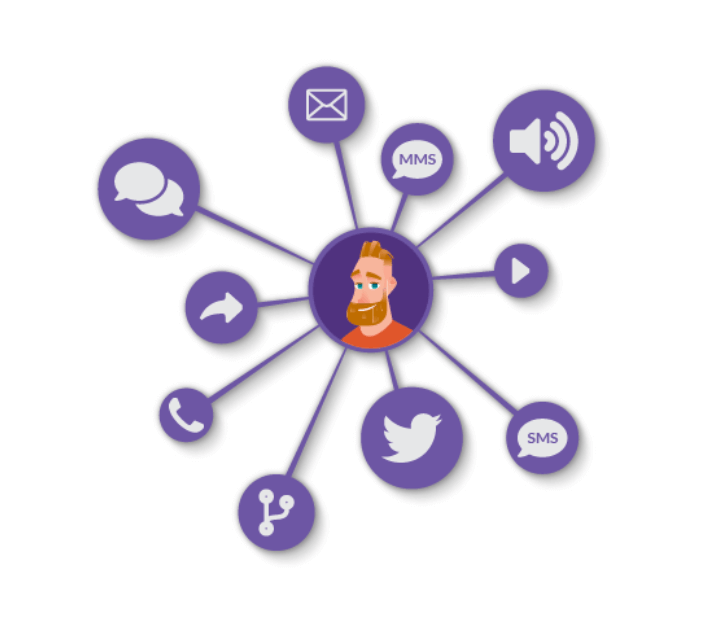
4 Call Center Projects to Boost Agent and Customer Experience
Customer service leaders like you have split attention. Your focus lives in two places — with your call center agents and on projects for your customers.
Balancing a good employee experience with a good customer experience may feel like taking a seat on one side of an empty seesaw.
But don’t feel overwhelmed. I promise you can build a great experience for your customers and for your agents. In fact, the two are undeniably linked. Plenty of data shows, the better your agent experience, the better your customer experience. With careful thought and attention, you can implement call center projects with double the impact.
It’s time to kick things into high gear and reflect on where (and how) your call center performance can be a bit better, so you can give your agents the support and development they need to do more for customers. Even incremental improvements in agent performance and operational efficiency bring big gains to your customer experience.
Here are four projects to put to work in your call center today for a better customer and agent experience.
4 Call Center Projects to Boost Customer and Agent Experience
1. Create a customer feedback loop
How do you know if you’re delivering a good experience to your customers? You have to ask them, of course.
Getting honest feedback is tricky. Plenty of customers are more than happy to tell your frontline agents what they think of your service. But, if you’re not delivering a good customer experience, some angry customers slip beneath your radar. You’ll only notice their anger when customers quietly end their contracts and don’t renew. Or, when they ignore marketing outreach more and more. Maybe even, when reviews about your poor CX suddenly plague the internet (And by then, you have another mess to clean up).
The best way to avoid these scenarios is to create a feedback loop with your customers.
Send out CSAT surveys with ask open-ended questions after interactions. Even include a feedback form in your help center so your customers can volunteer their input. But, don’t stop with qualitative survey data. It’s often anecdotal. Pair those real responses with behavioral and interaction data, too.

Gather analytics and feedback to learn about your customers’ needs and their journey with your brand. Review metrics and customer interactions often to spot important trends. Did you have a bunch of customers churn recently? Are your hold times longer than usual? How are your CSAT scores trending? Look for triggers in your data so you can get a grip on the entire customer journey.
How it benefits customers:
You find out what’s really causing your customers pain. And then, you and your team can act to fix those pains. If you use customer feedback to grow, your customers will notice the difference in your service. They’ll feel heard, appreciated, and better served the more you take their thoughts and entire journey into account.
How it benefits agents:
What better way for your agents to grow than for them to know where they excel and where they need to improve? Your agents want feedback. They want to know what’s expected and how their performance meets (or doesn’t meet) those expectations. When they learn how their actions impact customers, they grow in professional skills and the job only gets easier.
2. Customize your reports to get the best read on your KPIs
Data data data. Are you sick of hearing about it, yet? (Disclaimer: we’re not sick of talking about it. We love it). Call center leaders and operations teams are always vying for more data. It’s so valuable you can’t ignore it.
Your contact center platform holds records of hundreds of customer interactions. That means you have hundreds, even thousands, of data points to lean into so you can improve your customer and agent experience.
But making sense of endless cells of data and all your metrics can be hard without the right visuals and comparisons. So, revamp your reporting dashboards. Customize your reporting to track the metrics you care about most. Then, build dashboards to help you visualize your real-time and historical data, so you can see what’s happening in your contact center at a glance.
Want to color coordinate? Or compare Average Handle Time with your Customer Satisfaction Score? Choose the metrics that matter to your team, and compare them side by side in your reports and dashboards.
Use colors like red, yellow, and green to show where you stand with your most important metrics. That way you, your ops leaders, and your agents have quick visual cues letting you know what KPIs need attention and which ones are trending toward your goals.

How it benefits customers:
Tons of customers skip out on surveys because they don’t have the time. But others don’t share feedback because they’re skeptical you’ll actually listen. If you turn your data into action items, your customers feel heard. And, you build experiences your customers actually want.
Create customer-focused wallboards and dashboards to take a deeper look at the metrics that matter most to your customers.
Does your behavioral data tell you that customers churn after they experience crazy long hold times? Or maybe they leave after calling back four times for help with the same problem. Your data tells you what your customers care about, so you can keep a watch and report on the right metrics. Then, you can come up with a game plan and call center projects to fix glaring issues.
How it benefits agents:
Did you know cluttered reports actually create more stress for your agents? Instead of overwhelming your team with numbers, focus on a few KPIs to build up your employees and benefit your customers. And after you choose your core KPIs, focus on them for an extended period of time. Don’t switch your important metrics too frequently or you risk overwhelming your team.
Metrics like Training Investment per Agent and Transfer Rate help you track whether your agents feel empowered to do their work. Do they feel like they can handle situations without a manager? Do they know their goals and understand why each of their KPIs matter? When you organize and use reporting tools effectively, you prepare your agents to tackle each day with their best foot forward.
3. Set up self-service tools
People like to be self-sufficient. And, most people like finding answers to their own problems. Customer experience trends show self-service tools jumped ahead as a focus for contact centers this year. CCW found that enhancing digital channels and self-service tools are the top two priorities for contact center leaders.
A self-service portal is just one of the ways to offer self-help tools for your customers. These tools take the form of knowledge bases, feedback forms, community forums, service request tickets, or even automated web chats. Self-service tools supplement your frontline support team, ready to solve the common questions and issues your customers face.
If you don’t already have self-service tools available, call center projects that give your customers the reins should take high priority. The benefits are many — whether it’s teaching your customers new skills, boosting your site traffic, or cultivating a customer community.
How it benefits customers:
Your customers will thank you for this one. First, it saves them from having to reach out to you for simple problems. With resources available to them, you empower your customers to solve the problem themselves (and learn more about your product or service in the process).
Helping the customer isn’t just solving their problem in the moment. It’s about giving them proactive tools to avoid issues and self-serve in the future.
How it benefits agents:
When your customers don’t reach out with tedious, common questions, your agents have more time and space to take on the really tough cases. Your agents get more opportunities to grow, tackle problems, and be even more productive (without the burnout). With fewer calls and support tickets, agents can spend more time with each customer – the ones who really need them.
4. Add new channels to your communication mix
Omnichannel communication is only growing in importance for customer service. Customers want to communicate with you in the way that works best for them. For some, that’s still by phone. For many (many) others, that’s by texting, chatting, or emailing you, instead. In fact, 86% of customers now expect their service interactions to move seamlessly across any channel they want to use. And, your strategy needs to support customer preferences every step of the way.

Think of Disney as a model of great omnichannel. Disney uses technology to blend their in-person experiences with their digital ones. They have a variety of ways for guests to communicate, access information, and take charge of their own experience.
At most amusement parks, you dig through a backpack for your wallet or sunglasses. Or, you’re stuck wearing a fanny pack so you can grab cash quickly instead of slinging off your backpack and making a pit-stop to find what you need.
Disney fixes these inconveniences with two digital channels; the My Disney Experience app and MagicBands wearable technology. Disney puts all your info – from park maps to reservations – in the app so you have instant access to what you need. No need to flag down a customer service rep to find out how to get to Epcot. And, a little rubber bracelet (the MagicBand) stores your tickets, ID info, and even your credit card so you can buy food and souvenirs with a swipe of your wrist.
Use customer data to establish how your customers like to communicate and interact with your brand. That way you have a foundation for an omnichannel strategy you can pass off to your vendor, so they can get the right channels up and running to help you succeed.
How it benefits customers:
Customers today want the freedom to choose how they reach you. They want to know they can hand out their information once, and you’ll use it to give them a good experience. They want their questions answered seamlessly. And fast. When you make every touchpoint with your customers smooth and thoughtful, your customers leave feeling cared for.
How it benefits agents:
No call center agent wants to be handed a customer’s problem without any context. And no agent wants to start an interaction with a customer who’s already tired of waiting for a resolution. When you smooth out your omnichannel experience, your agents feel better prepared to resolve issues that do pop up. Relieve stress for both agents and customers by taking on call center projects to build a strong omnichannel experience.
We originally published this post on January 7, 2020, and we updated it with new insight on October 14, 2021.


